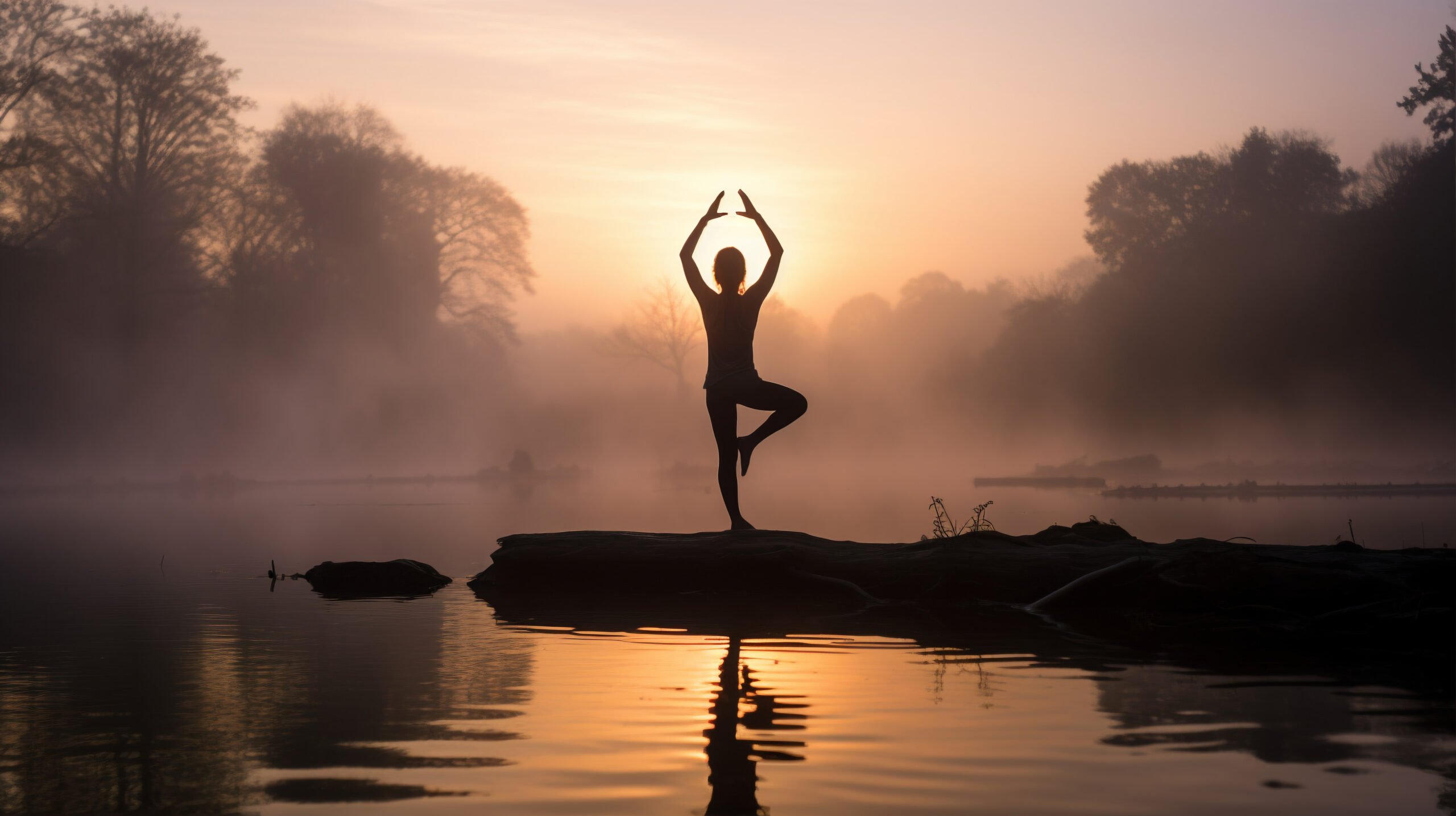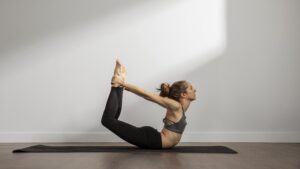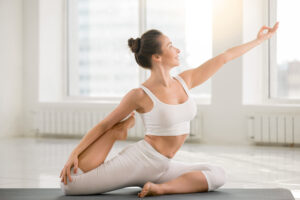Your cart is currently empty!

If you’re new to yoga and hoping to increase your flexibility, you’re not alone. Many people turn to yoga to loosen tight muscles, improve posture, and feel more agile. But with so many yoga styles out there, beginners often ask: “Which type of yoga is best for flexibility?” The answer depends on your body, your goals, and your mindset.
In this article, we explore the most beginner-friendly yoga styles for flexibility, supported by expert opinions and science-backed insight.
Why Most Beginners Struggle with Flexibility (And Why That’s Okay)
Let’s be honest—when you’re new to yoga, you’re likely stiff, self-conscious, and unsure if you’re even “doing it right.” That’s completely normal.
Many beginners assume they’re not “flexible enough” for yoga, but here’s the truth:
Yoga doesn’t require flexibility. Yoga builds it.
In fact, some of the most respected yoga instructors today started with very limited mobility.
According to Dr. Loren Fishman, physician and yoga therapist at Columbia University,
“Flexibility is a learned skill. Yoga teaches your body to let go of unnecessary tension, but it does so gradually—not instantly.”
So, Which Type of Yoga Should You Start With?

Different yoga styles emphasize flexibility in different ways. Some use movement. Some use stillness. Some go deep into muscles, while others target the fascia or even your nervous system.
Below are three yoga styles that are beginner-friendly and actually help improve flexibility, each in its own unique way.
1. Hatha Yoga — For the “I’ve Never Done Yoga” Crowd
Best for:
-
People who are new to yoga
-
Those recovering from injury
-
Anyone feeling overwhelmed by complex flows
Hatha yoga is probably the closest thing to “classic yoga.” It’s slower-paced, pose-focused, and most importantly—gentle. In a Hatha class, you’ll hold basic postures like Downward Dog or Cobra for longer periods, which gives your muscles and joints time to adapt without being rushed.
Adriene Mishler, founder of Yoga With Adriene, describes Hatha as
“a place to return to the basics, to slow down and truly feel each posture without distraction.”
How It Helps with Flexibility:
-
Teaches correct posture alignment
-
Gives your body time to soften into the stretch
-
Builds foundational strength alongside mobility
Good for people who feel stiff in the hips, shoulders, or hamstrings and want a controlled, low-pressure environment to open up.
2. Yin Yoga — For Deep, Passive Flexibility Gains
Best for:
-
Stiff connective tissue (like hips and lower back)
-
Quiet evening practice
-
People who sit long hours during the day
Yin Yoga is unlike any other yoga style. You don’t move much at all—you hold poses for up to 5 minutes, allowing your deep connective tissues (like fascia, joints, and ligaments) to gradually release tension.
According to Bernie Clark, author of The Complete Guide to Yin Yoga,
“Yin is where the magic happens in stillness. It’s not about muscle strength—it’s about surrendering to time and gravity.”
How It Helps with Flexibility:
-
Stretches deeper than regular yoga (past the muscles)
-
Breaks down tight fascia that limits mobility
-
Encourages a relaxed nervous system—key for true flexibility
Ideal if you feel “stuck” or stiff in the hips and spine. Just remember: Yin is intense in its own way. It’s not easy, but it’s powerful.
3. Vinyasa Yoga — Flexibility Through Movement
Best for:
-
People who enjoy rhythm, flow, and light cardio
-
Building flexibility and strength simultaneously
-
Those who get bored easily in static poses
Vinyasa is the most active of the three styles here. It’s based on linking breath to movement—so instead of holding a pose for minutes, you move through them in a flowing sequence. Think Sun Salutations, Warrior sequences, or Down Dog into Cobra.
Briohny Smyth, a popular instructor on Alo Moves, says:
“Vinyasa creates flexibility by taking your body through full, fluid ranges of motion. It’s less about ‘stretching’ and more about ‘unlocking’.”
How It Helps with Flexibility:
-
Warms up the body, making muscles more pliable
-
Builds active flexibility (through controlled movement)
-
Balances strength and mobility—which leads to long-term gains
Great for people who don’t want to “sit still and stretch,” but still want to increase flexibility through repetition and flow.
So…Which One Should You Pick?
Each of these styles has a different flavor, and honestly? They can all work if you give them time. But here’s a simple way to decide:
| You Are… | Start With… | Why? |
|---|---|---|
| Stiff, anxious, or out of shape | Hatha Yoga | Slow pace, no pressure |
| Tired of tight hips or back | Yin Yoga | Deep tissue release |
| Energetic or bored with static stretches | Vinyasa | Builds flexibility in motion |
💡 Pro Tip: You don’t have to choose just one. Many experienced yogis combine all three styles throughout the week for a well-rounded practice.
Final Advice from the Experts

Here are three golden nuggets of wisdom from yoga teachers around the world:
-
Tara Stiles (Strala Yoga):
“Flexibility isn’t something you force—it’s something you allow.”
-
Eddie Stern (Yoga instructor, author):
“Nervous system regulation is the real gateway to long-term flexibility.”
-
Jessamyn Stanley (Yoga for All):
“You don’t need to touch your toes to be doing yoga. You just need to show up.”
Want to Start Right Now?
We’re creating a free 7-Day Beginner Flexibility Yoga Plan exclusively for Shinoria readers. It’ll include daily routines, video links, and beginner-safe sequences you can try at home.
[Subscribe to download it] (or add your email for updates!)
FAQ
1. What is the best yoga style for improving flexibility for beginners?
For beginners, the best yoga styles to enhance flexibility are Hatha Yoga, Yin Yoga, and Vinyasa Yoga.
-
Hatha Yoga is perfect for beginners because it focuses on slow, controlled movements and holds, helping to build flexibility gradually.
-
Yin Yoga targets the deep connective tissues, such as fascia, and involves long-held postures to improve flexibility, especially in the hips, spine, and lower back.
-
Vinyasa Yoga offers a dynamic flow, connecting breath with movement, which can increase flexibility while building strength at the same time.
2. How often should I practice yoga to see improvements in flexibility?
To see noticeable results in flexibility, aim to practice yoga at least 3–4 times per week. Consistency is key to gradually improving your range of motion. For best results, combine static stretches (from Yin Yoga or Hatha Yoga) with dynamic flows (from Vinyasa Yoga).
Remember, flexibility improvements take time, so patience is essential.
3. I am very stiff; should I still try yoga?
Absolutely! Yoga is ideal for people who feel stiff. In fact, yoga is one of the most effective ways to improve flexibility over time. You don’t need to be flexible to start practicing; yoga helps you develop it. Begin with gentle practices like Hatha Yoga or Yin Yoga, which focus on breathing and holding poses that gradually loosen tight muscles.
Yoga is about progress, not perfection, so start at your own pace, and you’ll notice improvement with consistent practice.
4. Can I practice yoga if I have back pain or tight muscles?
Yes, yoga can be incredibly beneficial for people dealing with back pain or tight muscles. Yin Yoga and Hatha Yoga are especially helpful for relieving tension in the back and hips. These styles focus on gentle stretches that release muscle tightness and improve flexibility.
If you experience persistent pain, it’s important to consult with a healthcare professional before beginning yoga to ensure you’re choosing the right movements for your condition.5. What if I can’t touch my toes or perform advanced yoga poses?
5. What if I can’t touch my toes or perform advanced yoga poses?
That’s perfectly fine! Yoga is about the journey, not the destination. Everyone has different levels of flexibility, and you don’t need to touch your toes to practice yoga. Start with basic postures like Downward Dog, Child’s Pose, and Cobra, and focus on proper form rather than getting into the deepest stretch.
As you continue practicing, your flexibility will naturally improve. Use props like blocks or straps to support your practice and modify poses as needed.
6. How long will it take to see flexibility improvements from yoga?
The timeline for flexibility improvements varies from person to person. On average, you may start noticing subtle improvements in 4 to 6 weeks of consistent practice. However, achieving greater flexibility, especially in areas like the hips and hamstrings, may take 3–6 months of regular yoga sessions.
Remember, progress is gradual, and flexibility will improve as you continue practicing regularly and safely.
7. Can I combine different styles of yoga for flexibility?
Yes, combining different yoga styles can offer a well-rounded approach to improving flexibility.
-
Start with Hatha Yoga to build a strong foundation and learn proper alignment.
-
Incorporate Yin Yoga for deeper tissue stretches, especially in areas like the hips, back, and legs.
-
Add Vinyasa Yoga for dynamic movement and muscle strength alongside flexibility.
This combination can give you a balanced and effective practice that promotes flexibility and overall well-being.8. What if I’m a beginner and feel overwhelmed by advanced poses?
8. What if I’m a beginner and feel overwhelmed by advanced poses?
It’s completely normal to feel overwhelmed when you’re just starting out, especially when faced with advanced poses. Focus on mastering the basics first, and don’t rush into advanced postures. Hatha Yoga is great for beginners, as it emphasizes foundational poses with proper alignment and slower movements.
As your flexibility and strength improve, you’ll be able to move into more advanced poses at your own pace.
9. Do I need any special equipment for practicing yoga at home?
For beginners, all you really need is a comfortable yoga mat. However, a few accessories can enhance your practice:
-
Yoga blocks to assist with alignment and support in poses
-
Yoga straps for reaching deeper stretches
-
Bolsters for added comfort in restorative poses (especially in Yin Yoga)
-
A cushion for sitting poses to support your lower back
These accessories can make your practice more comfortable and accessible, especially if you’re working on increasing flexibility.10. Can I do yoga without a class or instructor?
10. Can I do yoga without a class or instructor?
Yes! You can absolutely practice yoga on your own, especially with the help of online videos, apps, and tutorials. Many beginners enjoy using YouTube or apps like Yoga With Adriene for self-guided sessions.
If you’re practicing on your own, be sure to listen to your body, take your time, and don’t push beyond your limits. Focus on alignment and breath, and remember to stay consistent for the best results.
Leave a Reply